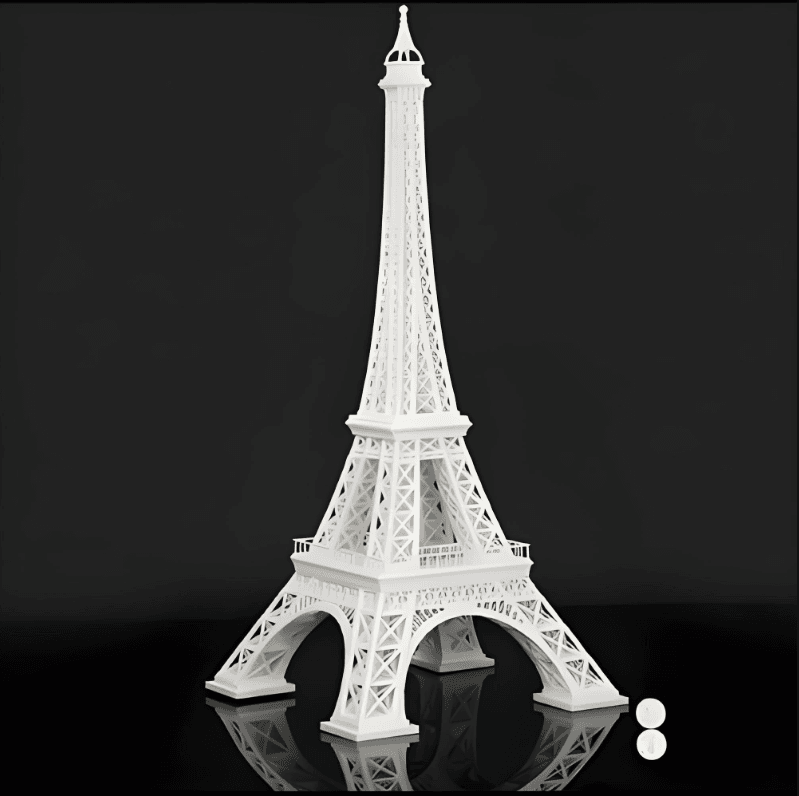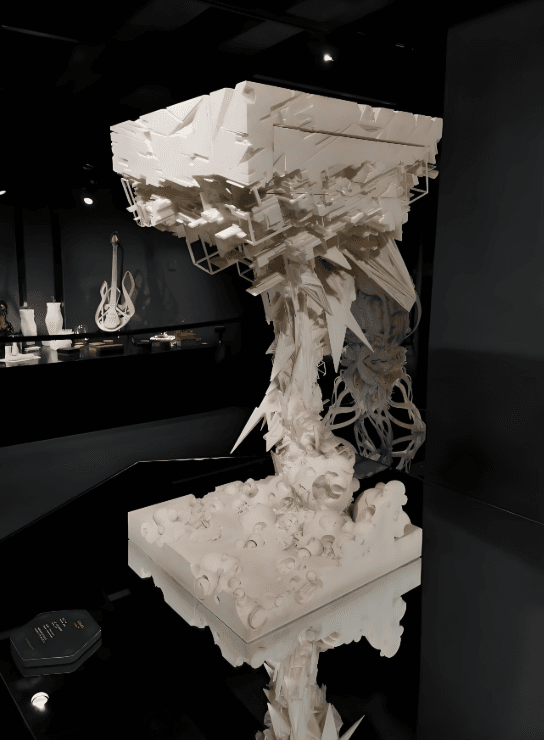Imagine this: Your idea goes from a digital design to a physical product in just a few hours! That’s the magic of additive manufacturing—also known as 3D printing. This technology is reshaping industries like aerospace, healthcare, and even fashion. In this article, we’ll walk you through what it is, how it works, and how it can save you time and money on your projects. Ready to embark on your 3D printing journey?
What is Additive Manufacturing?
In its relatively short history, particularly in the past decade, additive manufacturing has achieved remarkable feats. Consequently, it’s easy to overlook the initial strides made in the late 1980s. Even the most optimistic industry observers couldn’t have imagined that additive manufacturing components would be commonplace in today’s aircraft, rockets, automobiles, and even within the human body.
Additive manufacturing, often referred to as 3-D printingAdditive manufacturing is a revolutionary technology that builds objects by stacking materials (such as plastic, metal, or resin) layer by layer. Unlike traditional “subtractive manufacturing” (like milling), it “grows” parts from scratch with almost no waste. That’s why it’s also called 3D printing—a magical way to turn your ideas into reality.. Initially utilized for prototyping purposes in the 1980s, it enabled rapid creation of scale models without the traditional setup costs. Over time, additive manufacturing advanced to include rapid tooling for mold creation and eventually evolved to produce functional products by the early 2000s. Today, additive manufacturing has become integral to various industries, with companies like Boeing and General Electric incorporating it into their business processes.
How Additive Manufacturing Works?
Here’s a brief overview of how it works:
Firstly, a digital 3D model of the object is created using Computer-Aided Design (CAD) software or obtained through 3D scanning.
Next, slicing software divides the digital model into thin horizontal layers, determining each layer’s dimensions and specifications based on the printer and desired object properties.
The sliced design is then sent to the 3D printer, where the object is built layer by layer. Various additive manufacturing technologies, such as Fused Deposition Modeling (FDM) or Selective Laser Sintering (SLS), deposit materials like plastic, metal, or ceramic according to the sliced design.
Each layer is fused or cured together using heating, cooling, or chemical processes, forming a solid structure.
After printing, the object may undergo post-processing steps such as cleaning, support removal, and surface finishing to ensure quality.
The result? A finished, customizable object with minimal material waste and intricate geometries, showcasing the versatility and efficiency of additive manufacturing.
Applications of Additive Manufacturing

A. Aerospace and Defense Industries: Additive manufacturing revolutionizes aerospace and defense with lightweight, complex components for aircraft, missiles, and drones, enhancing performance and agility.
B. Automotive Sector: In automotive, additive manufacturing speeds prototyping, produces lightweight parts for improved fuel efficiency, and creates specialized tooling for manufacturing processes, boosting efficiency.
C. Medical and Healthcare Applications: Additive manufacturing transforms healthcare by crafting personalized implants, prosthetics, and medical devices, advancing patient care and enabling bioprinting for tissue engineering and organ transplantation.
What materials used in additive manufacturing
In additive manufacturing, various materials are employed depending on the specific process and application. Common materials include thermoplastics like ABS, PLA, and nylon, as well as metals such as titanium alloys, stainless steel, and aluminum alloys. Ceramics, composites like carbon fiber-reinforced polymers, and biocompatible materials are also used. These materials offer diverse properties suitable for applications in industries like aerospace, healthcare, and consumer goods, with ongoing advancements expanding the range of available options.
7 types of additive manufacturing?
Additive manufacturing, or 3D printing, offers diverse methods for creating objects layer by layer. Here’s a brief look at seven key techniques:
- Fused Deposition Modeling (FDM): Melts and extrudes thermoplastic filaments through a nozzle.
- Stereolithography (SLA): Uses UV lasers to solidify liquid resin, ideal for intricate designs.
- Selective Laser Sintering (SLS): Fuses powdered materials like plastics, metals, or ceramics with a laser.
- Selective Laser Melting (SLM): Melts metal powders together to create dense metal parts.
- Electron Beam Melting (EBM): Fuses metal powders with an electron beam in a vacuum.
- Digital Light Processing (DLP): Cures liquid resin with a digital light projector, offering rapid printing.
- Binder Jetting: Deposits a binding agent onto a powder bed, bonding layers together.
Each method has specific advantages, serving industries from aerospace to healthcare, and continues to drive innovation in manufacturing.
Advantages of Additive Manufacturing

Additive manufacturing offers unparalleled benefits:
- Versatile Design: It allows for the creation of complex shapes, enhancing performance while reducing costs. For instance, Airbus produced a titanium alloy bracket that was 30% lighter without sacrificing durability.
- Customization: Parts can be tailored without the need for molds, enabling mass customization. Vectoflow produces custom probes for fluid flow measurement applications using various materials.
- Accelerated Development: By bypassing tooling and machining, additive manufacturing speeds up product development, like the fuel injector head for the Ariane 6 rocket, previously made from 248 machined parts.
- Simplified Maintenance: On-demand production reduces inventory needs, exemplified by Mercedes-Benz using additive manufacturing for spare classic car parts.
- Reduced Material Waste: It minimizes waste due to optimized material usage.
- Complex Geometries: Enables intricate designs and lightweight components for improved efficiency.
- On-Demand Production: Responds quickly to demand fluctuations and customization requests.
- Design Optimization: Facilitates rapid prototyping and iteration for higher-quality products.
- Functional Integration: Incorporates features like internal channels or sensors directly into parts.
- Localized Production: Reduces carbon emissions and streamlines supply chains by enabling manufacturing closer to demand.
- Accessibility: Increasingly accessible, fostering innovation and entrepreneurship across industries.
Limitations of Additive Manufacturing
- Limit on Materials: Restricted material options may hinder suitability for certain applications, necessitating careful material selection for final production parts.
- High Production Costs: Additive manufacturing can still be costlier than traditional methods due to specialized raw materials and equipment, increasing production expenses.
- High Cost of Entry: Initial setup costs for in-house operations can be substantial, deterring small businesses and startups from adoption. Transitioning from traditional methods can also be expensive and disruptive.
- Speed Constraints: While additive manufacturing can create multiple parts simultaneously, it may not be efficient for high-volume production, unless partnering with specialized 3D printing services.
Comparison with subtractive manufacturing (CNC machining)
Additive manufacturing and subtractive manufacturing (CNC machining) are two primary methods for producing parts, each with distinct characteristics:
- Material Usage:
- Additive: Minimizes waste by building up parts layer by layer.
- Subtractive: Involves cutting away material from a solid block, resulting in significant waste.
- Design Complexity:
- Additive: Excels in complex geometries with intricate details.
- Subtractive: Better suited for simpler designs but can achieve complexity with multiple operations.
- Speed and Efficiency:
- Additive: Generally slower, especially for high-volume production.
- Subtractive: Faster for individual parts, but may have longer lead times for complex shapes.
- Surface Finish:
- Additive: Requires post-processing for smoother finishes.
- Subtractive: Achieves superior surface finishes directly from machining.
- Material Selection:
- Additive: Limited materials compared to subtractive methods.
- Subtractive: Offers a wide range of materials, providing more flexibility.
- Waste and Environmental Impact:
- Additive: Minimizes material waste, more environmentally friendly.
- Subtractive: Generates significant waste, contributing to environmental concerns.
- Cost Considerations:
- Additive: Lower initial setup costs but may have higher per-unit costs.
- Subtractive: Higher initial investment but often more cost-effective for large-scale production.
Conclusion
As the technology continues to evolve, advancements in materials, speed, and precision are expanding its applications, making it more accessible and cost-effective. However, challenges such as material limitations, scalability, and the need for skilled expertise remain areas for further development.
In conclusion, additive manufacturing is not just a tool for creating objects; it is a catalyst for rethinking how we design, produce, and distribute goods in a more sustainable and efficient manner. As industries continue to adopt and adapt to this technology, its potential to revolutionize manufacturing and drive future innovation is truly limitless. Embracing additive manufacturing today means staying ahead in the competitive landscape of tomorrow.
Now that you’ve discovered the potential of additive manufacturing, what’s next? Are you ready to create a prototype or streamline your production process? Leave a comment with your thoughts, or click the button below to chat with our experts. The future of 3D printing starts here!




